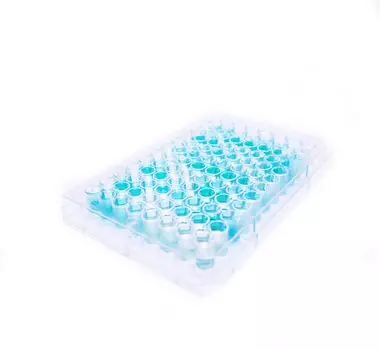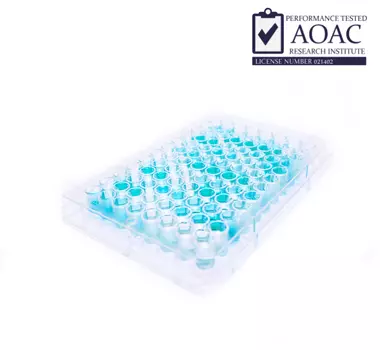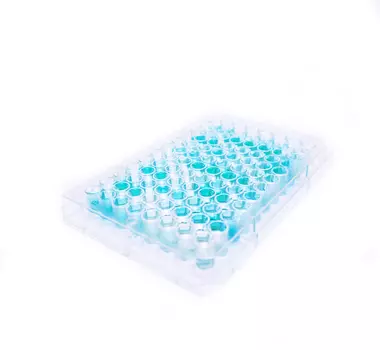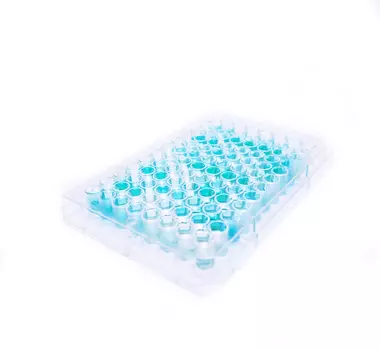Histamine release kit
Whole blood samples
Ref: BA-E-1100
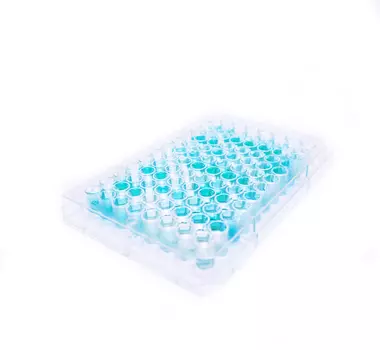 +
+Histamine release add-on kit
DatasheetProtocolMSDS
Intended for in vitro diagnostics & research, this add-on kit to the BA-E-1000 histamine ELISA kit enables the measurement of histamine release in heparinized whole blood samples, allowing for instance to determine the sensitivity of basophilic granulocytes to specific allergens.
| Sample type | 500µl whole blood |
| Samples/kit | 40 samples in duplicate |
| Sensitivity | 0.2ng/ml |
| Range | 0.5 – 50ng/ml |
| Assay time | Sample preparation (1h30) |
| Reactivity | Reacts with all species |
| References | Cited in 2 papers |
Product overview
| Product name | Histamine release kit – Whole blood samples |
| Description | Supplementary kit to in vitro diagnostics enzyme immunoassay (ELISA) for the quantitative determination of histamine release in whole blood samples |
| Labels | IVD, CE |
| Format | 96-well plate |
| Samples | 500µl whole blood |
| Reactivity | Reacts with all species |
| Standard range | 0 / 0.5 – 50ng/ml |
| Sensitivity |
0.2ng/ml |
| Specificity | No significant cross-reactivity was observed with Histamine analogs such as 3-Methyl-Histamine, Tyramine, L-Phenylalanine, L-Histidine, L-Tyrosine, Tryptamine, 5-Hydroxy-Indole-Acetic Acid, Serotonin |
| Assay time | 1h30 sample preparation + ELISA overnight |
| Storage | Store at 2-8°C for up to 6 months |
| Datasheets | Instructions for use, Material safety datasheet |
| Sample collection & storage | 24-hours heparinized whole blood stored at 20-25°C |
| Sample preparation | Sample acylation (1h30) |
| ELISA | Histamine antiserum incubation (3H or overnight), revelation and read steps (1h) |
| Detailed protocol | Download instructions for use |
Product citation
- Bimodal action of the flavonoid quercetin on basophil function: an investigation of the putative biochemical targets
Check the article
Authors : Chirumbolo et al., Clinical & Molecular Allergy
2010-09 - H2-receptor-mediated vasodilation contributes to postexercise hypotension
Check the article
Authors : McCord et al., Journal of Applied Physiology
2005-09
